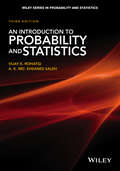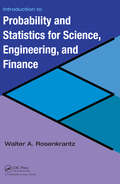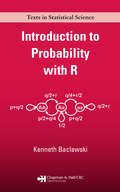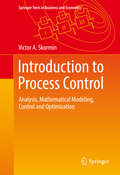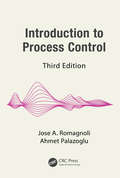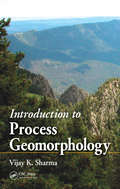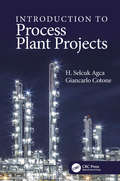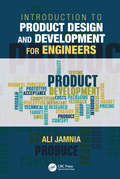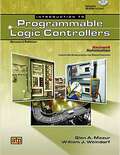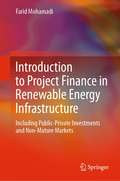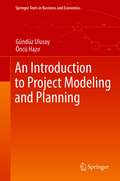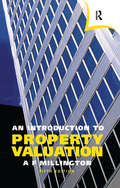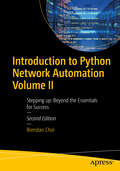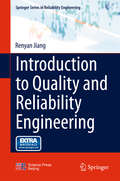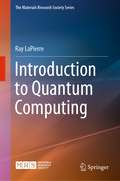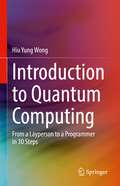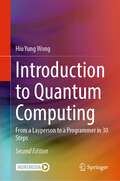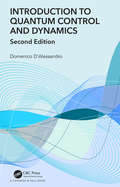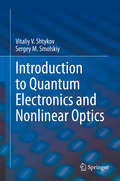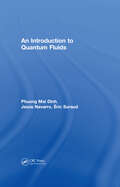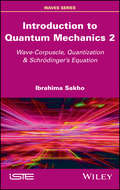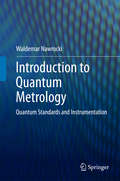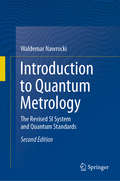- Table View
- List View
An Introduction to Probability and Statistics
by Vijay K. Rohatgi A.K. Md. SalehA well-balanced introduction to probability theory and mathematical statistics Featuring a comprehensive update, An Introduction to Probability and Statistics, Third Edition remains a solid overview to probability theory and mathematical statistics. Divided into three parts, the Third Edition begins by presenting the fundamentals and foundations of probability. The second part addresses statistical inference, and the remaining chapters focus on special topics. Featuring a substantial revision to include recent developments, An Introduction to Probability and Statistics, Third Edition also includes: A new section on regression analysis to include multiple regression, logistic regression, and Poisson regression A reorganized chapter on large sample theory to emphasize the growing role of asymptotic statistics Additional topical coverage on bootstrapping, estimation procedures, and resampling Discussions on invariance, ancillary statistics, conjugate prior distributions, and invariant confidence intervals Over 550 problems and answers to most problems, as well as 350 worked-out examples and 200 remarks Numerous figures to further illustrate examples and proofs throughout An Introduction to Probability and Statistics, Third Edition is an ideal reference and resource for scientists and engineers in the fields of statistics, mathematics, physics, industrial management, and engineering. The book is also an excellent text for upper-undergraduate and graduate- level students majoring in probability and statistics.
Introduction to Probability and Statistics for Engineers
by Milan HolickýThe theory of probability and mathematical statistics is becoming an indispensable discipline in many branches of science and engineering. This is caused by increasing significance of various uncertainties affecting performance of complex technological systems. Fundamental concepts and procedures used in analysis of these systems are often based on the theory of probability and mathematical statistics. The book sets out fundamental principles of the probability theory, supplemented by theoretical models of random variables, evaluation of experimental data, sampling theory, distribution updating and tests of statistical hypotheses. Basic concepts of Bayesian approach to probability and two-dimensional random variables, are also covered. Examples of reliability analysis and risk assessment of technological systems are used throughout the book to illustrate basic theoretical concepts and their applications. The primary audience for the book includes undergraduate and graduate students of science and engineering, scientific workers and engineers and specialists in the field of reliability analysis and risk assessment. Except basic knowledge of undergraduate mathematics no special prerequisite is required.
Introduction to Probability and Statistics for Science, Engineering, and Finance
by Walter A. RosenkrantzIntegrating interesting and widely used concepts of financial engineering into traditional statistics courses, Introduction to Probability and Statistics for Science, Engineering, and Finance illustrates the role and scope of statistics and probability in various fields.The text first introduces the basics needed to understand and create
Introduction to Probability with R (Chapman & Hall/CRC Texts in Statistical Science)
by Kenneth BaclawskiBased on a popular course taught by the late Gian-Carlo Rota of MIT, with many new topics covered as well, Introduction to Probability with R presents R programs and animations to provide an intuitive yet rigorous understanding of how to model natural phenomena from a probabilistic point of view. Although the R programs are small in length, they ar
Introduction to Process Control
by Victor A. SkorminThis textbook is intended for an introductory graduate level on process control, taught in most engineering curricula. It focuses on the statistical techniques and methods of control and system optimization needed for the mathematical modeling, analysis, simulation, control and optimization of multivariable manufacturing processes. In four sections, it covers: Relevant mathematical methods, including random events, variables and processes, and their characteristics; estimation and confidence intervals; Bayes applications; correlation and regression analysis; statistical cluster analysis; and singular value decomposition for classification applications. Mathematical description of manufacturing processes, including static and dynamic models; model validation; confidence intervals for model parameters; principal component analysis; conventional and recursive least squares procedures; nonlinear least squares; and continuous-time, discrete-time, s-domain and Z-domain models. Control of manufacturing processes, including transfer function/transfer matrix models; state-variable models; methods of discrete-time classical control; state variable discrete-time control; state observers/estimators in control systems; methods of decoupling control; and methods of adaptive control. Methods and applications of system optimization, including unconstrained and constrained optimization; analytical and numerical optimization procedures; use of penalty functions; methods of linear programming; gradient methods; direct search methods; genetic optimization; methods and applications of dynamic programming; and applications to estimation, design, control, and planning. Each section of the book will include end-of-chapter exercises, and the book will be suitable for any systems, electrical, chemical, or industrial engineering program, as it focuses on the processes themselves, and not on the product being manufactured. Students will be able to obtain a mathematical model of any manufacturing process, to design a computer-based control system for a particular continuous manufacturing process, and be able to formulate an engineering problem in terms of optimization, as well as the ability to choose and apply the appropriate optimization technique.
Introduction to Process Control, Third Edition (Chemical Industries)
by Jose A. Romagnoli Ahmet PalazogluIntroduction to Process Control, Third Edition continues to provide a bridge between traditional and modern views of process control by blending conventional topics with a broader perspective of integrated process operation, control, and information systems. Updated and expanded throughout, this third edition addresses issues highly relevant to today’s teaching of process control: Discusses smart manufacturing, new data preprocessing techniques, and machine learning and artificial intelligence concepts that are part of current smart manufacturing decisions Includes extensive references to guide the reader to the resources needed to solve modeling, classification, and monitoring problems Introduces the link between process optimization and process control (optimizing control), including the effect of disturbances on the optimal plant operation, the concepts of steady-state and dynamic back-off as ways to quantify the economic benefits of control, and how to determine an optimal transition policy during a planned production change Incorporates an introduction to the modern architectures of industrial computer control systems with real case studies and applications to pilot-scale operations Analyzes the expanded role of process control in modern manufacturing, including model-centric technologies and integrated control systems Integrates data processing/reconciliation and intelligent monitoring in the overall control system architecture Drawing on the authors’ combined 60 years of teaching experiences, this classroom-tested text is designed for chemical engineering students but is also suitable for industrial practitioners who need to understand key concepts of process control and how to implement them. The text offers a comprehensive pedagogical approach to reinforce learning and presents a concept first followed by an example, allowing students to grasp theoretical concepts in a practical manner and uses the same problem in each chapter, culminating in a complete control design strategy. A vast number of exercises throughout ensure readers are supported in their learning and comprehension. Downloadable MATLAB® toolboxes for process control education as well as the main simulation examples from the book offer a user-friendly software environment for interactively studying the examples in the text. These can be downloaded from the publisher’s website. Solutions manual is available for qualifying professors from the publisher.
Introduction to Process Geomorphology
by Vijay K. SharmaIntroduction to Process Geomorphology provides an integrative approach to the process dynamics and the origin of landforms by the contemporary processes involved in their evolution. The author highlights the physical and chemical laws governing the activity of the earth-surface processes in specific environmental stress conditions, puts forward com
Introduction to Process Plant Projects
by H. Selcuk Agca Giancarlo CotoneThe book covers all stages of process plant projects from initiation to completion and handover by describing the roles and actions of all functions involved. It discusses engineering, procurement, construction, project management, contract administration, project control and HSE, with reference to international contracting and business practices.
Introduction to Product Design and Development for Engineers
by Dr. Ali JamniaIntroduction to Product Design and Development for Engineers provides guidelines and best practices for the design, development, and evaluation of engineered products. Created to serve fourth year undergraduate students in Engineering Design modules with a required project, the text covers the entire product design process and product life-cycle, from the initial concept to the design and development stages, and through to product testing, design documentation, manufacturability, marketing, and sustainability. Reflecting the author's long career as a design engineer, this text will also serve as a practical guide for students working on their capstone design projects.
Introduction To Programmable Logic Controllers
by Glenn A. Mazur William J. WeindorfProgrammable logic controllers (PLCs) are increasing in use, and technicians in all fields must be familiar with the fundamentals of installing, programming, and troubleshooting digital and analog PLCs. Introduction to Programmable Logic Controllers is a text/workbook that provides a solid foundation in PLC theory, installation, programming, operation, and troubleshooting. Many large, detailed drawings of commercial and industrial PLC systems are used to support the information in the textbook. Although hands-on training on industrial equipment is the best training method, teaching the use of digital and analog PLCs is often a challenge because of the high costs of equipment. This training package provides several alternatives to these costs. A CD-ROM is included with Introduction to Programmable Logic Controllers and contains information to supplement the textbook.
Introduction to Project Finance in Renewable Energy Infrastructure: Including Public-Private Investments and Non-Mature Markets
by Farid MohamadiWhat is project finance? What makes project or structured finance so relevant for large renewable energy infrastructure? Which vocabulary do I need to know in order to speak the same language during meetings with lawyers, investors, bankers and engineers? These questions and many more are answered throughout this book, offering real world examples to bridge the gap between theory and practice. The book details the role of each stakeholder in the development of renewable energy projects, the interconnection between all the agreements, the financial process from fundraising to financial close, the processes of due diligence, risk analysis, project investment valuation and much more. It also provides with an introduction to Portfolio Management using renewable energy assets and an explanation of the role of Climate Finance in green energy investments. The commented glossary enables readers to unpick the jargon used in project finance for renewable energy, and the numerous creative figures and comprehensive tables aid with understanding. Offering a complete picture of the discipline, Introduction to Project Finance in Renewable Energy Infrastructure will be of value to professionals, engineers and academics alike interested in understanding the process and components of project finance in renewable energy infrastructures, in both private and public-private contexts.
Introduction to Project Management: A Source Book for Traditional PM Basics
by Davies A. IgberaeseThis book presents the fundamentals of project management in simple language and an easy-to-understand format. It is targeted principally at those who are learning or desiring to learn project management as well as those who are already taking project management as a course of study or as a profession. It covers all the basic aspects of project management including the core areas prescribed by the Project Management Institute (PMI) in the Project Management Body of Knowledge (PMBOK) sixth edition. Although the PMBOK Guide seventh edition has significantly shifted focus from a process based standard to a principle based standard, it does not invalidate nor replace the detailed knowledge base contained in the sixth edition, which substantially emphasizes project management processes and knowledge areas. This is particularly apt for the traditional approach to project delivery, which is predictive in nature and has the bulk of the planning done upfront. The sections of the book are arranged in order of Project Management Processes as they fall within the respective Project Management Knowledge Areas. Experienced project manager, Davies Igberaese, presents all the basic content of traditional project management in a straightforward practical sequence as a typical project manager would go about the processes of initiating, planning, executing, monitoring, and closing a project without losing sight of the iterative nature of project management. The inclusion of Project Management Templates gives students and other users of the book the confidence required to effectively understand the basics of managing a wide variety of projects across disciplines including construction, building, industrial engineering, petroleum engineering, software engineering, information technology, business administration, and event management. Introduction to Project Management: A Source Book for Traditional PM Basics can serve as a core textbook for academic courses in project management, for preparing for PMP and CAPM Certification exams, as an excellent resource for new project managers, as well as a handy reference book for project sponsors.
An Introduction to Project Modeling and Planning (Springer Texts in Business and Economics)
by Gündüz Ulusoy Öncü HazırThis textbook teaches the basic concepts and methods of project management, but also explains how to convert it to useful results in practice. Project management offers a promising working area for theoretical and practical applications, and developing software and decision support systems (DSS). This book specifically focuses on project planning and control, with an emphasis on mathematical modeling. Models and algorithms establish a good starting point for students to study the relevant literature and support pursuing academic work in related fields. The book provides an introduction to theoretical concepts, and it also provides detailed explanations, application examples and case studies that deal with real life problems. The chapter topics include questions that underlie critical thinking, interpretation, analytics, and making comparisons. Learning outcomes are defined and the content of the book is structured in accordance with these goals. Chapter 1 begins by introducing the basic concepts, methods and processes of project management. Chapter 2 explores the fundamentals of organizing and managing projects from an organization’s perspective. Issues related to project team formation, role of project managers, and matrix organization are discussed. Chapter 3 is devoted to project modeling and planning. It explains how to collect proper data in order to perform an analysis and develop mathematical models. Chapter 4 introduces deterministic scheduling models, which can be used in constructing the time schedules. Models employing time-based and finance-based objectives are introduced. Chapter 5 focuses on the time/cost trade-off problem, explaining how to reduce the duration of some of the activities and therefore accelerate the project duration at the expense of additional costs. Chapter 6 introduces different resource management policies including resource portfolio management. Chapter 7 discusses models and methods of scheduling in case of uncertainty models and methods of scheduling in case of uncertainty. Chapter 8 highlights contract types and payment schedules. It explores identification and allocation of risk in contracts, project control issues, disputes and resolution management. Different models and decision support systems are presented in Chapter 9 in order to investigate client-contractor negotiations and the bidding process from different aspects. Chapter 10 covers monitoring and control, mainly the processes and methods behind them. Chapter 11 brings together qualitative and quantitative techniques with simulation and software applications. The design of a risk management process is introduced in detail and at the hand of a case study. Chapter 12 examines several models and approaches of uncertainty in project scheduling, dealing with various aspects of stochastic nature of the decision environment and robustness. Chapter 13 explains the mathematical formulation and solution procedures for resource constrained project scheduling. The project selection problem is inherently a multi-objective problem and is treated as such in Chapter 14. Several models and solution techniques including robust selection methods are introduced. Finally Chapter 15 evaluates recent approaches and promising research areas in project management including strategic project management, agile approaches, and data management in project modeling in the big data era.
An Introduction to Property Valuation
by Alan MillingtonIt is now 25 years since the first edition of this book was written, and the objectives of the fifth edition remain the same as those of the first edition, that is to provide "an introduction to and general background reading for the subject of property valuation". It is directed not just at would be surveyors and valuers, but at all those who may be interested in getting an understanding of property valuation.
Introduction to Python Network Automation Volume II: Stepping up: Beyond the Essentials for Success
by Brendan ChoiContinue your Python network automation journey and delve deeper into advanced techniques and methodologies. Volume 2 of this comprehensive guide takes you beyond the essentials, equipping you with advanced skills and strategies crucial for success in network automation. Building upon the knowledge gained in Volume 1, you’ll set the stage for mastery in this dynamic field. You’ll start by establishing a robust lab environment for advanced automation projects tailored to your needs and use practical exercises to gain valuable insights into essential networking protocols. Then automate repetitive tasks with precision and efficiency by leveraging powerful Python libraries and tools. You’ll also see how to streamline IP address management and data center infrastructure management tasks with Python. Discover advanced techniques for network management and monitoring to optimize network performance and security. Explore the development of custom tools and applications for Cisco IOS upgrade tasks in complex network environments and put your skills to the test with real-world scenarios. All this is designed to solidify your expertise and confidence in network automation practices. Your network management capabilities will be enhanced with advanced tools, such as NetBox. Introduction to Python Network Automation Volume 2 - Stepping up provides a comprehensive roadmap to elevate your skills and excel in the dynamic field of network automation. Whether you're a seasoned professional or a newcomer to the field, this guide equips you with the tools and knowledge needed to thrive in today's network automation landscape. What You Will Learn Apply Python fundamentals and network automation strategies effectively. Utilize Python for streamlined network administration, boosting productivity. Consolidate Linux fundamentals and IP network services for enhanced network management. Practice implementing regular expressions in Python for network application development. Develop working Cisco IOS upgrading Python application in PoC environment. Explore Python's extensive applications in enterprise network automation for versatile solutions. Who This Book Is For IT engineers and developers, network managers and students, who would like to learn network automation using Python.
Introduction to Quality and Reliability Engineering
by Renyan JiangThis book presents the state-of-the-art in quality and reliability engineering from a product life-cycle standpoint. Topics in reliability include reliability models, life data analysis and modeling, design for reliability as well as accelerated life testing and reliability growth analysis, while topics in quality include design for quality, acceptance sampling and supplier selection, statistical process control, production tests such as environmental stress screening and burn-in, warranty and maintenance. The book provides comprehensive insights into two closely related subjects, and includes a wealth of examples and problems to enhance readers' comprehension and link theory and practice. All numerical examples can be easily solved using Microsoft Excel. The book is intended for senior undergraduate and postgraduate students in related engineering and management programs such as mechanical engineering, manufacturing engineering, industrial engineering and engineering management programs, as well as for researchers and engineers in the quality and reliability fields. Dr. Renyan Jiang is a professor at the Faculty of Automotive and Mechanical Engineering, Changsha University of Science and Technology, China.
Introduction to Quantum Computing (The Materials Research Society Series)
by Ray LaPierreThis book provides a self-contained undergraduate course on quantum computing based on classroom-tested lecture notes. It reviews the fundamentals of quantum mechanics from the double-slit experiment to entanglement, before progressing to the basics of qubits, quantum gates, quantum circuits, quantum key distribution, and some of the famous quantum algorithms. As well as covering quantum gates in depth, it also describes promising platforms for their physical implementation, along with error correction, and topological quantum computing. With quantum computing expanding rapidly in the private sector, understanding quantum computing has never been so important for graduates entering the workplace or PhD programs. Assuming minimal background knowledge, this book is highly accessible, with rigorous step-by-step explanations of the principles behind quantum computation, further reading, and end-of-chapter exercises, ensuring that undergraduate students in physics and engineering emerge well prepared for the future.
Introduction to Quantum Computing: From a Layperson to a Programmer in 30 Steps
by Hiu Yung WongThis textbook introduces quantum computing to readers who do not have much background in linear algebra. The author targets undergraduate and master students, as well as non-CS and non-EE students who are willing to spend about 60 -90 hours seriously learning quantum computing. Readers will be able to write their program to simulate quantum computing algorithms and run on real quantum computers on IBM-Q. Moreover, unlike the books that only give superficial, “hand-waving” explanations, this book uses exact formalism so readers can continue to pursue more advanced topics based on what they learn from this book.Encourages students to embrace uncertainty over the daily classical experience, when encountering quantum phenomena;Uses narrative to start each section with analogies that help students to grasp the critical concept quickly;Uses numerical substitutions, accompanied by Python programming and IBM-Q quantum computer programming, as examples in teaching all critical concepts.
Introduction to Quantum Computing: From a Layperson to a Programmer in 30 Steps
by Hiu Yung WongThis textbook introduces quantum computing to readers who do not have much background in linear algebra based on the self-study experience of the author as an engineer. The author targets undergraduate and master students who are willing to spend about 60 -90 hours seriously learning quantum computing. This book is also suitable for self-study and teaching videos for each chapter and more than 200 exercises with answers are provided. Readers will be able to write their program to simulate quantum computing algorithms and run on real quantum computers on IBM-Q. Moreover, unlike books that only give superficial, “hand-waving” explanations, this book uses exact formalism so readers can continue to pursue more advanced topics based on what they learn from this book
Introduction to Quantum Control and Dynamics (Advances in Applied Mathematics)
by Domenico D’AlessandroThe introduction of control theory in quantum mechanics has created a rich, new interdisciplinary scientific field, which is producing novel insight into important theoretical questions at the heart of quantum physics. Exploring this emerging subject, Introduction to Quantum Control and Dynamics presents the mathematical concepts and fundamental physics behind the analysis and control of quantum dynamics, emphasizing the application of Lie algebra and Lie group theory. To advantage students, instructors and practitioners, and since the field is highly interdisciplinary, this book presents an introduction with all the basic notions in the same place. The field has seen a large development in parallel with the neighboring fields of quantum information, computation and communication. The author has maintained an introductory level to encourage course use. After introducing the basics of quantum mechanics, the book derives a class of models for quantum control systems from fundamental physics. It examines the controllability and observability of quantum systems and the related problem of quantum state determination and measurement. The author also uses Lie group decompositions as tools to analyze dynamics and to design control algorithms. In addition, he describes various other control methods and discusses topics in quantum information theory that include entanglement and entanglement dynamics. Changes to the New Edition: New Chapter 4: Uncontrollable Systems and Dynamical Decomposition New section on quantum control landscapes A brief discussion of the experiments that earned the 2012 Nobel Prize in Physics Corrections and revised concepts are made to improve accuracy Armed with the basics of quantum control and dynamics, readers will invariably use this interdisciplinary knowledge in their mathematics, physics and engineering work.
Introduction to Quantum Electronics and Nonlinear Optics
by Sergey M. Smolskiy Vitaliy V. ShtykovThis textbook, based on the authors’ class-tested material, is accessible to students at the advanced undergraduate and graduate level in physics and engineering. While its primary function is didactic, this book’s comprehensive choice of topics and its clear and authoritative synthesis of ideas make it a useful reference for researchers, device engineers, and course instructors who wish to consolidate their knowledge of this field. The book takes the semi-classical approach where light is treated as a wave in accordance with the classical Maxwell equations, while matter is governed by quantum theory. It begins by introducing the postulates and mathematical framework of quantum theory, followed by the formalism of the density matrix which allows the transition from microscopic (quantum) quantities to macroscopic (classical) ones. Consequently, the equations describing the reaction of matter to the electromagnetic field in the form of polarization, magnetization, and current are derived. These equations (together with the Maxwell equations) form the complete system of equations sufficient to model a wide class of problems surrounding linear and nonlinear interactions of electromagnetic fields with matter. The nonlinear character of the governing equations determines parameters of the steady-state mode of the quantum generator and is also demonstrated in harmonic generation via propagation of laser radiation in various media. The touchstone description of magnetic phenomena will be of interest to scientists who deal with applications of magneto-resonance phenomena in biology and medicine. Other advanced topics covered include electric dipole transitions, magnetic dipole transitions, plasma transitions, and the devices that can be based on these and other electro-optical and nonlinear-optical systems. This textbook features numerous exercises, some of which are investigatory and some of which require computational solutions.
An Introduction to Quantum Fluids
by Phuong Mai Dinh Jesus Navarro Eric SuraudWhat do atomic nuclei, neutron stars, a domestic power supply, and the stunning colors of stained glass in cathedrals all have in common? The answer lies in the unifying concept of quantum fluids, which allows us to understand the behavior and properties of these different systems in simple terms. This book reveals how quantum mechanics, usually considered as restricted to the invisible microscopic world, in fact plays a crucial role at all scales of the universe. The purpose of the book is to introduce the reader to the fascinating and multifaceted world of quantum fluids, which covers different systems at different scales in the physical world. The first part of the book discusses the notion of phases (solid, liquid, gas), presents basic aspects of the structure of matter and quantum mechanics, and includes some elements of statistical mechanics. The second part provides a description of the major quantum liquids, starting with the paramount case of electron fluids and their many applications in everyday life, followed by liquid helium and atomic nuclei. The authors go on to explore matter at very high densities, covering nuclear matter and compact stars, and the behavior of matter at extremely low temperatures, with the fascinating ‘superphases’ of superconductivity and superfluidity. The topic of quantum fluids has multidisciplinary applications and this book will appeal to students and researchers in physics, chemistry, astrophysics, engineering and materials science.
Introduction to Quantum Mechanics 2: Wave-Corpuscle, Quantization and Schrodinger's Equation
by Ibrahima SakhoQuantum mechanics is the foundation of modern technology, due to its innumerable applications in physics, chemistry and even biology. This second volume studies Schrödinger's equation and its applications in the study of wells, steps and potential barriers. It examines the properties of orthonormal bases in the space of square-summable wave functions and Dirac notations in the space of states. This book has a special focus on the notions of the linear operators, the Hermitian operators, observables, Hermitian conjugation, commutators and the representation of kets, bras and operators in the space of states. The eigenvalue equation, the characteristic equation and the evolution equation of the mean value of an observable are introduced. The book goes on to investigate the study of conservative systems through the time evolution operator and Ehrenfest's theorem. Finally, this second volume is completed by the introduction of the notions of quantum wire, quantum wells of semiconductor materials and quantum dots in the appendices.
Introduction to Quantum Metrology
by Waldemar NawrockiThis book presents the theory of quantum effects used in metrology and results of the author's own research in the field of quantum electronics. The book provides also quantum measurement standards used in many branches of metrology for electrical quantities, mass, length, time and frequency. This book represents the first comprehensive survey of quantum metrology problems. As a scientific survey, it propagates a new approach to metrology with more emphasis on its connection with physics. This is of importance for the constantly developing technologies and nanotechnologies in particular. Providing a presentation of practical applications of the effects used in quantum metrology for the construction of quantum standards and sensitive electronic components, the book is useful for a wide audience of physicists and metrologists in the broad sense of both terms. In 2014 a new system of units, the so called Quantum SI, is introduced. This book helps to understand and approve the new system to both technology and academic community.
Introduction to Quantum Metrology: The Revised SI System and Quantum Standards
by Waldemar NawrockiThis book discusses the theory of quantum effects used in metrology, and presents the author’s research findings in the field of quantum electronics. It also describes the quantum measurement standards used in various branches of metrology, such as those relating to electrical quantities, mass, length, time and frequency.The first comprehensive survey of quantum metrology problems, it introduces a new approach to metrology, placing a greater emphasis on its connection with physics, which is of importance for developing new technologies, nanotechnology in particular. Presenting practical applications of the effects used in quantum metrology for the construction of quantum standards and sensitive electronic components, the book is useful for a broad range of physicists and metrologists. It also promotes a better understanding and approval of the new system in both industry and academia.This second edition includes two new chapters focusing on the revised SI system and satellite positioning systems. Practical realization (mise en pratique) the base units (metre, kilogram, second, ampere, kelvin, candela, and mole), new defined in the revised SI, is presented in details. Another new chapter describes satellite positioning systems and their possible applications. In satellite positioning systems, like GPS, GLONASS, BeiDou and Galileo, quantum devices – atomic clocks – serve wide population of users.
